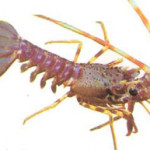
When people talk about coral reefs, fishermen tend to shrug their shoulders and complain about snagged lines and torn nets. But when you talk about groupers, they suddenly sit up and pay attention. Groupers are among the economically most important fishes of the coral reef, because of their popularity as food. Yet without the coral reef there would probably be no groupers. For this reason, groupers are an extremely important indicator species and your record of their existence or non-existence during your dive tells us a lot.
The giant grouper (Epinephelus lanceolatus) is one of the largest reef-dwelling fish. It may grow to more than 270 cm and reach weights of 300 kg. Found on reefs throughout the Indo-Pacific, it occurs from the Red Sea to Hawaii, and from New Zealand to southern Japan.
A solitary inhabitant of lagoon and seaward reefs, the giant grouper ranges from depths of a few feet to at least 45 m. Large individuals are territorial and may have a “home site” they frequent. The giant grouper patrols slowly or rests quietly close to the bottom. Its mottled coloration blends with the surroundings, providing good camouflage for this large-mouthed ambush hunter. Its diet includes spiny lobsters and other large crustaceans, reef fishes, small sea turtles, and small sharks – all are swallowed whole. The giant grouper is also known locally as the Queensland groper (sic).
Like all indicators, it is valuable if you can record the particular species you sight. However, recording the total number of groupers is just as important. The species that you may encounter in the New Zealand – Subtropical eco-region are listed below:
- Eightbar Grouper Epinephelus octofasciatus
- Giant Grouper Epinephelus lanceolatus
- Halfmoon Grouper Epinephelus rivulatus
- Saddletail Grouper Epinephelus daemelii








Social Profiles